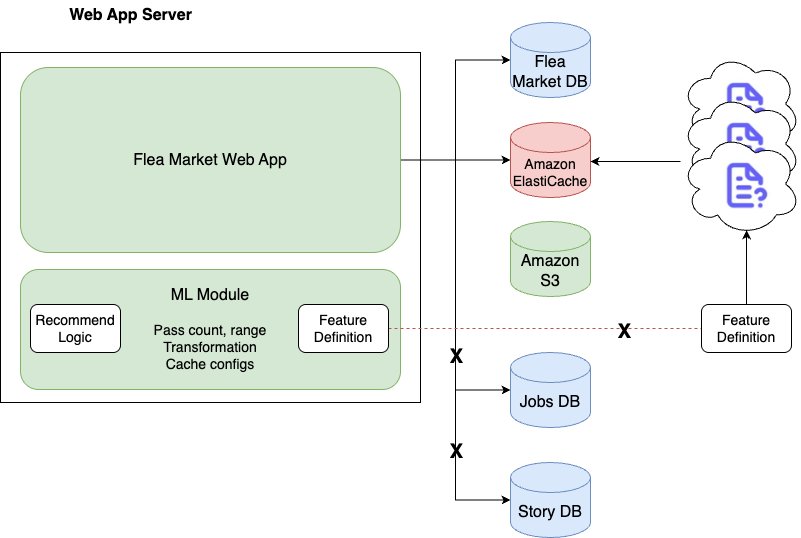AWS Architecture Blog
Category: Amazon ElastiCache
How Karrot built a feature platform on AWS, Part 1: Motivation and feature serving
This two-part series shows how Karrot developed a new feature platform, which consists of three main components: feature serving, a stream ingestion pipeline, and a batch ingestion pipeline. This post starts by presenting our motivation, our requirements, and the solution architecture, focusing on feature serving.
ITS adopts microservices architecture for improved air travel search engine
Internet Travel Solutions, LLC (ITS) is a travel management company that develops and maintains smart products and services for the corporate, commercial, and cargo sectors. ITS streamlines travel bookings for companies of any size around the world. It provides an intuitive consumer site with an integrated view of your travel and expenses. ITS had been […]
Let’s Architect! Leveraging SQL databases on AWS
SQL databases in Amazon Web Services (AWS), using services like Amazon Relational Database Service (Amazon RDS) and Amazon Aurora, offer software architects scalability, automated management, robust security, and cost-efficiency. This combination simplifies database management, improves performance, enhances security, and allows architects to create efficient and scalable software systems. In this post, we introduce caching strategies […]
Let’s Architect! Leveraging in-memory databases
In-memory databases play a critical role in modern computing, particularly in reducing the strain on existing resources, scaling workloads efficiently, and minimizing the cost of infrastructure. The advanced performance capabilities of in-memory databases make them vital for demanding applications characterized by voluminous data, real-time analytics, and rapid response requirements. In this edition of Let’s Architect!, […]
How Wego secured developer connectivity to Amazon Relational Database Service instances
How do you securely access Amazon Relational Database Service (Amazon RDS) instances from a developer’s laptop? Online travel marketplace, Wego, shares their journey from bastion hosts in the public subnet to lightweight VPN tunnels on top of Session Manager, a capability of AWS Systems Manager, using temporary access keys. In this post, we explore how […]
Creating a Multi-Region Application with AWS Services – Part 2, Data and Replication
Data is at the center of stateful applications. Data consistency models will vary when choosing in-Region vs. multi-Region. In this post, part 2 of 3, we continue to filter through AWS services to focus on data-centric services with native features to help get your data where it needs to be in support of a multi-Region […]
Using Amazon Aurora Global Database for Low Latency without Application Changes
Deploying global applications has many challenges, especially when accessing a database to build custom pages for end users. One example is an application using AWS Lambda@Edge. Two main challenges include performance and availability. This blog explains how you can optimally deploy a global application with fast response times and without application changes. The Amazon Aurora […]
Disaster Recovery with AWS managed services, Part 1: Single Region
This 3-part blog series discusses disaster recovery (DR) strategies that you can implement to ensure your data is safe and that your workload stays available during a disaster. In Part I, we’ll discuss the single AWS Region/multi-Availability Zone (AZ) DR strategy. The strategy outlined in this blog post addresses how to integrate AWS managed services […]
Offloading SQL for Amazon RDS using the Heimdall Proxy
Getting the maximum scale from your database often requires fine-tuning the application. This can increase time and incur cost – effort that could be used towards other strategic initiatives. The Heimdall Proxy was designed to intelligently manage SQL connections to help you get the most out of your database. In this blog post, we demonstrate […]
Toyota Connected and AWS Design and Deliver Collision Assistance Application
This post was cowritten by Srikanth Kodali, Sr. IoT Data Architect at AWS, and Will Dombrowski, Sr. Data Engineer at Toyota Connected Toyota Connected North America (TC) is a technology/big data company that partners with Toyota Motor Corporation and Toyota Motor North America to develop products that aim to improve the driving experience for Toyota […]








